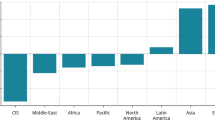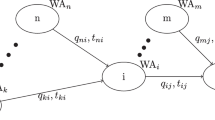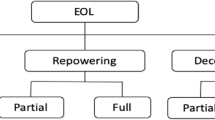Abstract
Power generation planning in hydrothermal systems is a complex optimization task, specially due to the high uncertainty in the inflows to hydro plants. Since it is impossible to traverse the huge scenario tree of the multistage problem, stochastic dual dynamic programming (SDDP) is the leading technique to solve it, originally from an expected-cost minimization perspective. However, there is a growing need to apply risk-averse/robust formulations to protect the system from critical hydrological scenarios. This is particularly important for predominantly hydro systems, because environmental issues prevent the construction of large reservoirs, thus reducing their water regulating capability. This paper proposes a two-level SDDP/Benders decomposition approach to include a new risk averse surface (RAS) concept for reservoir operation in power generation planning. The upper level problem is a SDDP solving strategy with expected-cost minimization criterion, where recourse functions for each time step are built through forward/backward passes. The second level consists in multi-period deterministic optimization subproblems for each node of the scenario tree, which are solved to ensure a desired level of protection from a set of given critical scenario several months ahead. An inner iterative procedure for each SDDP stage/scenario is applied, where feasibility cuts are included in the upper level subproblems to derive the RAS surface, which are multidimensional rule curves for reservoir operation. Such curves ensure that the policy provided by the SDDP algorithm yields storage levels in the reservoirs that are high enough to protect the system against such critical scenarios. A “max-type” time-linking penalization scheme for violation of RAS constraints is also proposed, which avoids the multiple application of the penalty value for the same violation in consecutive time steps, which may result in large marginal costs. Results are presented for the large-scale Brazilian system.












Similar content being viewed by others

Notes
the complete recourse property in stochastic programming states that the subproblem related to stage t of a decomposed problem remains feasible, regardless of the values of the decision variables \({x_\tau }\) in previous stages \(\tau \le t\).
We took the average elapsed time among the runs for each year.
References
Andrieu, L., Henrion, R., & Romisch, W. (2010). A model for dynamic chance constraints in hydro power reservoir management. European Journal of Operational Research, 207(2), 579–589.
Arvantidis, N. V., & Rosing, J. (1970). Composite representation of multireservoir hydroelectric power system. IEEE Transactions on Power Apparatus and Systems, 89(2), 319–326.
Askew, A. J. (1974). Optimum reservoir operation policies and the imposition of a reliability constraint. Water Resources Research, 10(1), 51–56.
Bellman, R. E., & Dreyfus, S. E. (1962). Applied Dynamic Programming (1st ed.). Princeton: Princeton University Press.
Benders, J. F. (1962). Partitioning procedures for solving mixed-variables programming problems. Numerische Mathematik, 4(1), 238–252.
Birge, J. R. (1985). Decomposition and partitioning methods for multistage stochastic linear programs. Operations Research, 33(5), 989–1007.
Brudenell, R. N., & Gilbreath, J. (1959). Economic complementary operation of hydro storage and steam power in the integrated TVA system. AIEE Transactions, pt III (Power Apparatus and Systems), 78(3), 136–156.
Carpentier, P., Chancelier, J.-P., Cohen, G., de Lara, M., & Girardeau, P. (2012). Dynamic consistency for stochastic optimal control problems. Annals of Operations Research, 200(1), 247–263.
Chen, Z. L., & Powell, W. B. (1999). Convergent cutting-plane and partial-sampling algorithm for multistage stochastic linear programs with recourse. Journal of Optimization Theory and Applications, 102(3), 497–524.
Collado, R. A., Papp, D., & Ruszczynski, A. (2012). Scenario decomposition of risk-averse multistage stochastic programming problems. Annals of Operations Research, 200(1), 147–170.
de Matos, V. L., Morton, D. P., & Finardi, E. C. (2017). Assessing policy quality in a multistage stochastic program for long-term hydrothermal scheduling. Annals of Operations Research, 253(2), 713–731.
de Mello, T. H., & Pagnoncelli, B. (2016). Risk aversion in multistage stochastic programming: A modeling and algorithmic perspective. European Journal of Operational Research, 249(1), 188–199.
Dempster, M., & Thompson, R. T. (1999). EVPI-based importance sampling solution procedures for multistage stochastic linear programmes on parallel mimd architectures. Annals of Operations Research, 90, 161–184.
Dentcheva, D., & Ruszczynski, A. (2003). Optimization with stochastic dominance constraints. SIAM Journal on Optimization, 14(2), 548–566.
Dias, B. H., Tomim, M. A., Marcato, A. L. M., Ramos, T. P., Brandi, R. B. S., Silva, I. C., et al. (2013). Parallel computing applied to the stochastic dynamic programming for long term operation planning of hydrothermal power. European Journal of Operational Research, 229(1), 1–16.
Donohue, C. J., & Birge, J. R. (2006). The abridged nested decomposition method for multistage stochastic linear programs with relatively complete recourse. Algorithmic Operations Research, 1(1), 20–30.
Escudero, L., Monge, J., & Romero-Morales, D. (2018). On the time-consistent stochastic dominance risk averse measure for tactical supply chain planning under uncertainty. Computers & Operations Research, 100, 270–286.
Escudero, L. F., Garin, A., & Unzueta, A. (2017). Scenario cluster lagrangean decomposition for risk averse in multistage stochastic optimization. Computers & Operations Research, 85, 154–171.
Faber, B. A., & Stedinger, J. R. (2001). Reservoir optimization using sampling sdp with ensemble streamflow predicion (ESP) forecasts. Journal of Hydrology, 249(1–3), 113–133.
Gaivoronski, A . A., & Pflug, G. (2005). Value-at-risk in portfolio optimization: Properties and computational approach. Journal of Risk, 7(2), 1–31.
Gil, E., Bustos, J., & Rudnick, H. (2003). Short term hydrothermal generation scheduling model using a genetic algorithm. IEEE Transactions on Power Systems, 18(4), 1256–1264.
Gollmer, R., Gotzes, U., & Schultz, R. (2011). A note on second-order stochastic dominance constraints induced by mixed-integer linear recourse. Mathematical Programming, Series A, 126(1), 179–190.
Gollmer, R., Neise, F., & Schultz, R. (2008). Stochastic programs with first-order stochastic dominance constraints induced by mixed-integer linear recourse. SIAM Journal on Optimization, 19(2), 552–571.
Guigues, V., & Sagastizabal, C. A. (2008). A robust approach to handle risk constraints in mid and long-term energy-planning of hydro-thermal systems. In EngOpt 2008—International conference on engineering optimization, Rio de Janeiro, Brazil.
Guigues, V., & Sagastizabal, C. A. (2013). Risk averse feasible policies for stochastic linear programming. Mathematical Programming, 138(1–2), 167–198.
Hicks, R. H., Gagnon, C. R., Jacoby, S. L. S., & Kowalik, J. S. (1974). Large scale, nonlinear optimization of energy capability for the pacific northwest hydroelectric system. IEEE Transactions on Power Apparatus and Systems, 93(5), 1604–1612.
Infanger, G., & Morton, D. P. (1996). Cut sharing for multistage stochastic linear programs with interstage dependency. Mathematical Programming, 75(2), 241–256.
Kozmik, V., & Morton, D. (2015). Evaluating policies in risk-averse multi-stage stochastic programming. Mathematical Programming, 152(1), 275–300.
Latorre, L., Cerisola, S., Ramos, A., & Palacios, R. (2009). Analysis of stochastic problem decomposition algorithms in computational grids. Annals of Operations Research, 166(1), 355–373.
Little, J. D. (1955). The use of storage water in a hydroelectric system. Operations Research, 3(2), 187–197.
Lohman, T., Hering, A. S., & Rebennack, S. (2016). Spatio-temporal hydro forecasting of multireservoir inflows for hydro-thermal scheduling. European Journal of Operational Research, 255(1), 243–258.
Maceira, M. E. P. (1993). Stochastic dual dynamic programming applied to the operation planning of hydrothermal systems and modelling the stochastic inflows by means of a periodic autoregressive model. Technical Report 237/93, CEPEL, Electric Energy Research Center (in Portuguese).
Maceira, M. E. P., & Bezerra, C. V. (1997). Stochastic streamflow model for hydroelectric systems. In Fifth probabilistic methods applied to power systems—PMAPS, Vancouver, Canada.
Maceira, M. E. P., Duarte, V. S., Penna, D. D. J., Moraes, L. A. M., & Melo, A. C. G. (2008). Ten years of application of stochastic dual dynamic programming in official and agent studies in Brazil—Description of the Newave program. In 16th Power Systems Computation Conference—PSCC, Glasgow, Scotland.
Maceira, M. E. P., Duarte, V. S., Penna, D. D. J., & Tcheou, M. P. (2011). An approach to consider hydraulic coupled systems in the construction of equivalent reservoir model in hydrothermal operation planning. In 17th power systems computation conference—PSCC, Stockholm, Sweden.
Maceira, M. E. P., Marzano, L., Penna, D., Diniz, A. L., & Justino, T. (2015). Application of CVaR risk aversion approach in the expansion and operation planning and for setting the spot price in the Brazilian hydrothermal interconnected system. International Journal of Electrical Power and Energy Systems, 72, 126–135.
Maceira, M. E. P., Melo, A. C. G., & Zimmermann, M. P. (2016). Application of stochastic programming and probabilistic analysis as key parameters for real decision making regarding implementing or not energy rationing—A case study for the Brazilian hydrothermal interconnected system. In 19th power systems computation conference—PSCC, Genoa, Italy.
Maceira, M. E. P., Penna, D. D. J., Diniz, A. L., Pinto, R. J., Melo, A. C. G., Vasconcellos, C. V., et al. (2018). Twenty years of application of stochastic dual dynamic programming in official and agent studies in Brazil—Main features and improvements on the Newave model. In 20th power systems computation conference—PSCC, Dublin, Ireland.
Maceira, M. E. P., Terry, L. A., Costa, F. S., Damazio, J. M., & Melo, A. C. G. (2002). Chain of optimization models for setting the energy dispatch and spot price in the Brazilian system. In 14th power system computation conference—PSCC, Sevilla, Spain.
Mo, B., Gjelsvik, A., & Grundt, A. (2001). Integrated risk management of hydro power scheduling and contract management. IEEE Transactions on Power Systems, 16(2), 216–221.
Morton, D. P. (1996). An enhanced decomposition algorithm for multistage stochastic hydroelectric scheduling. Annals of Operations Research, 64(1), 211–235.
Muller, A., & Stoyan, D. (2002). Comparison Methods for Stochastic Models and Risks. Chichester: Wiley.
Neto, T. A. A., Pereira, M. V. F., & Kelman, J. (1985). A risk-constrained stochastic dynamic programming approach to the operation planning of hydrothermal systems. IEEE Transactions on Power Apparatus and Systems, 104(2), 273–279.
Penna, D. D. J., Maceira, M. E. P., & Damázio, J. M. (2011). Selective sampling applied to long-term hydrothermal generation planning. In 17th power system computation conference—PSCC, Stockholm, Sweden.
Pereira, M. V. F., & Pinto, L. M. V. G. (1985). Stochastic optimization of a multireservoir hydroelectric system: A decomposition approach. Water Resources Research, 21(6), 779–792.
Pereira, M. V. F., & Pinto, L. M. V. G. (1991). Multi-stage stochastic optimization applied to energy planning. Mathematical Programming, 52(1–3), 359–375.
Pereira-Bonvallet, E., Puschel-Lovengreen, S., Matus, M., & Moreno, R. (2015). Optimizing hydrothermal scheduling with non-convex irrigation constraints: Case on the chilean electricity system. In 5th international workshop on hydro scheduling in competitive electricity markets, Trondheim, Norway.
Pflug, G. C., & Pichler, A. (2015). Time consistent decisions and temporal decomposition of coherent risk functional. Mathematics of Operations Research, 41(2), 682–699.
Philpott, A. B., & de Matos, V. L. (2012). Dynamic sampling algorithms for multi-stage stochastic programs with risk aversion. European Journal of Operational Research, 218(2), 470–483.
Philpott, A., de Matos, V., & Finardi, E. (2013). On solving multistage stochastic programs with coherent risk measures. Operations Research, 61(4), 957–970.
Pinto, R. J., Borges, C. L. T., & Maceira, M. E. P. (2013). An efficient parallel algorithm for large scale hydrothermal system operation planning. IEEE Transactions on Power Systems, 29(4), 4888–4896.
Ponrajah, R. A., & Galiana, F. D. (1998). Systems to optimize conversion efficiencies on ontario hydros hydroelectric plants. IEEE Transactions on Power Systems, 13(3), 1044–1050.
Prekopa, A. (2012). Multivariate value at risk and related topics. Annals of Operations Research, 193(1), 49–69.
Pritchard, G. (2015). Stochastic inflow modeling for hydropower scheduling problems. European Journal of Operational Research, 246(2), 496–504.
PSR. (2008). Possible improvements in the risk-aversion curve. Presentation at the Brazilian Independent System Operator (ONS) (in Portuguese).
Rotting, T. A., & Gjelsvik, A. (1992). Stochastic dual dynamic programming for seasonal scheduling in the Norwegian power system. IEEE Transactions on Power Systems, 7(1), 273–279.
Rudloff, B., Street, A., & Valladao, D. (2014). Time consistency and risk averse dynamic decision models: Definition, interpretation and practical consequences. European Journal of Operational Research, 234(3), 743–750.
Ruszczynski, A. (2010). Risk-averse dynamic programming for markov decision processes. Mathematical Programming, 125(2), 235–261.
Shapiro, A. (2009). On a time consistency concept in risk averse multistage stochastic programming. Operations Research Letters, 37(3), 143–147.
Shapiro, A. (2010). Analysis of stochastic dual dynamic programming method. European Journal of Operational Research, 209(1), 63–72.
Shapiro, A., & Pichler, A. (2016). Time and dynamic consistency of risk averse stochastic programs. Optimization Online, org/DB HTML/2016/09/5654
Shapiro, A., Tekaya, W., Costa, J., & Soares, M. (2013). Risk neutral and risk averse stochastic dual dynamic programming method. European Journal of Operational Research, 224(2), 375–391.
Shawwash, Z. K., Siu, T. K., & Russel, S. O. (2000). The B.C. hydro short-term hydro scheduling optimization model. IEEE Transactions on Power Systems, 15(3), 1125–1131.
Sniedovich, M. (1979). Reliability-constrained reservoir control problems—1. Methodological issues. Water Resources Research, 15(6), 1574–1582.
Stage, S., & Larsson, Y. (1961). Incremental cost of water power. AIEE Transactions, pt III (Power Apparatus and Systems), 80(3), 361–365.
Terry, L., Pereira, M., Neto, T. A., Silva, L., & Sales, P. (1986). Coordinating the energy generation of the brazilian national hydrothermal electrical generating system. Interfaces, 16(1), 16–38.
Tufegdzig, N., Frowd, R. J., & Stadlin, W. O. (1996). A coordinated approach for real-time short-term hydro scheduling. IEEE Transactions on Power Systems, 11(4), 1698–1704.
Velasquez-Bermudez, J. (2003). Generalized dual dynamic programming theory. Annals of Operations Research, 117(1–4), 21–31.
Zou, J., Ahmed, S., & Sun, A. (2018). Stochastic dual dynamic integer programming. Mathematical Programming Series A, 175(1–2), 461–502.
Acknowledgements
The authors would like to thank the CPAMP’s Validation Task Force, composed by over 60 people from the Electrical Energy Research Center (CEPEL), the Ministry of Mines and Energy (MME), the Brazilian ISO (ONS), the Energy Research Office (EPE) and the Chamber for Commercialization of Electrical Energy (CCEE) who carried out an invaluable and comprehensive analysis of the RAS methodology in the NEWAVE model. Special thanks go to A.S.Kligerman, M.P.Soares, V.S.Duarte (ONS), P.A.David, T.C.César, S.Q.Brandão (EPE), G.Arfux, C.Giglio, M.Sierra (CCEE), V.M.Ferreira, A.J.Silva (MME), L.G.B. Marzano, T. C. Justino, R.J.Pinto and P.E.R.Sangy. The authors would also like to thank L.C. Brandao for the careful review of the mathematical contents of the paper.
Author information
Authors and Affiliations
Corresponding author
Additional information
Publisher's Note
Springer Nature remains neutral with regard to jurisdictional claims in published maps and institutional affiliations.
Rights and permissions
About this article
Cite this article
Diniz, A.L., Maceira, M.E.P., Vasconcellos, C.L.V. et al. A combined SDDP/Benders decomposition approach with a risk-averse surface concept for reservoir operation in long term power generation planning. Ann Oper Res 292, 649–681 (2020). https://doi.org/10.1007/s10479-019-03419-4
Published:
Issue Date:
DOI: https://doi.org/10.1007/s10479-019-03419-4



